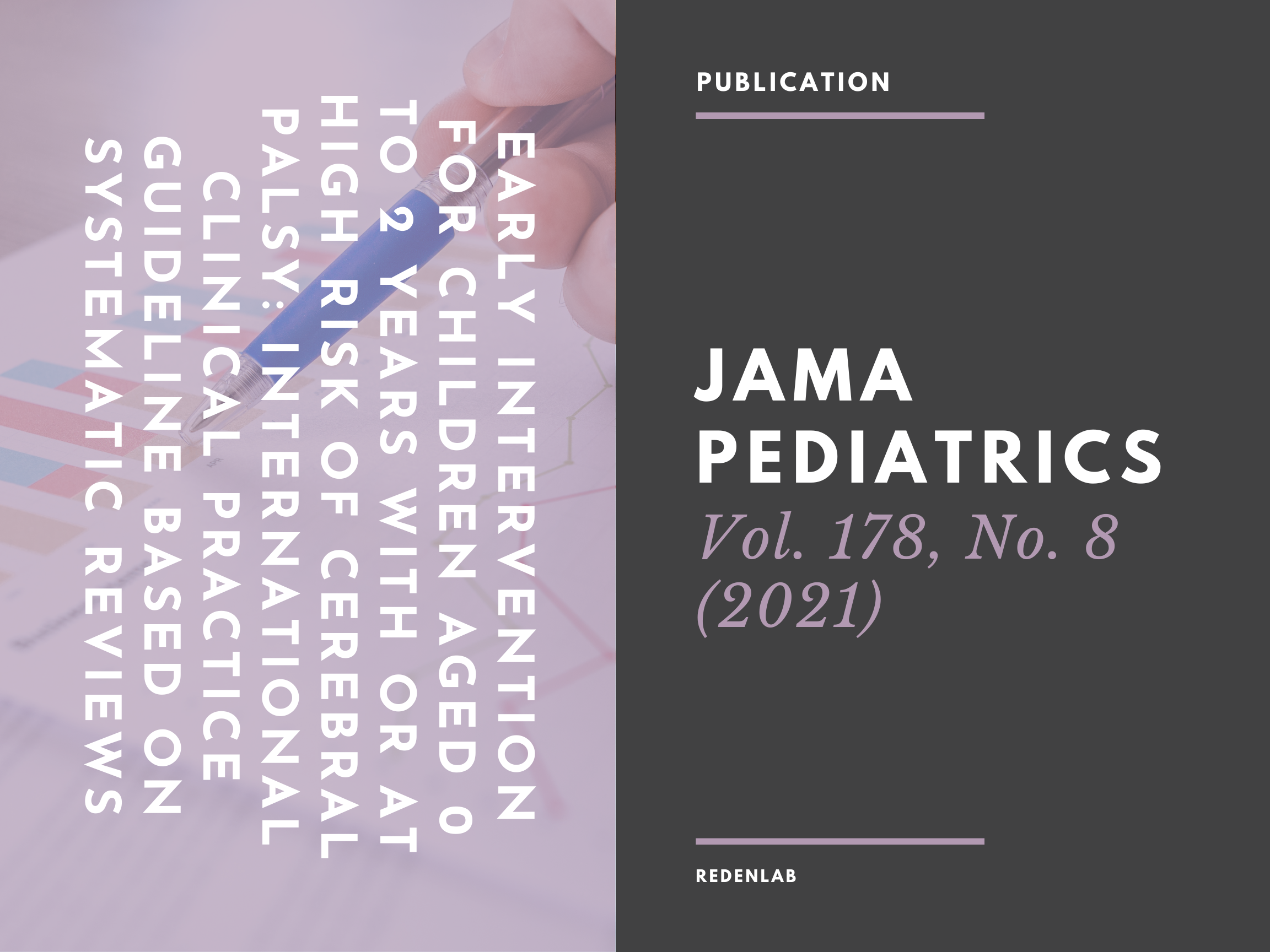Early intervention for children aged 0 to 2 years with or at high risk of cerebral palsy

International Clinical Practice Guideline Based on Systematic Reviews
Cerebral palsy (CP) is the most common childhood physical disability. Early intervention for children younger than 2 years with or at risk of CP is critical. Now that an evidence-based guideline for early accurate diagnosis of CP exists, there is a need to summarize effective, CP-specific early intervention and conduct new trials that harness plasticity to improve function and increase participation. Our recommendations apply primarily to children at high risk of CP or with a diagnosis of CP, aged 0 to 2 years.
An international team of clinicians and researchers have conducted a systematic review of the best available evidence about CP-specific early interventions across 9 domains promoting motor function, cognitive skills, communication, eating and drinking, vision, sleep, managing muscle tone, musculoskeletal health, and parental support.
The study is published in JAMA Pediatrics and can be found here.
Redenlab Pediatrics consultant Professor Angela Morgan was a co-author on the publication.
Conclusions and Relevance When a child meets the criteria of high risk of CP, intervention should start as soon as possible. Parents want an early diagnosis and treatment and support implementation as soon as possible. Early intervention builds on a critical developmental time for plasticity of developing systems. Referrals for intervention across the 9 domains should be specific as per recommendations in this guideline.
